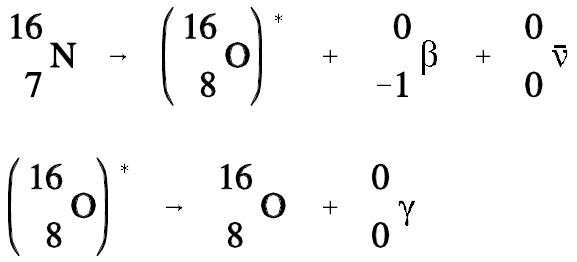
Isomers and Isomeric Transition
 المؤلف:
U.S. Department of Commerce, National Technical Information Service, 1993
المؤلف:
U.S. Department of Commerce, National Technical Information Service, 1993
 المصدر:
The Nuclear Physics and Reactor Theory Handbook
المصدر:
The Nuclear Physics and Reactor Theory Handbook
 الجزء والصفحة:
p 26
الجزء والصفحة:
p 26
 27-3-2017
27-3-2017
 2574
2574
Isomers and Isomeric Transition
Isomeric transition commonly occurs immediately after particle emission; however, the nucleus may remain in an excited state for a measurable period of time before dropping to the ground state at its own characteristic rate. A nucleus that remains in such an excited state is known as a nuclear isomer because it differs in energy and behavior from other nuclei with the same atomic number and mass number. The decay of an excited nuclear isomer to a lower energy level is called an isomeric transition. It is also possible for the excited isomer to decay by some alternate means, for example, by beta emission.
An example of gamma emission accompanying particle emission is illustrated by the decay of nitrogen-16 below.

 الاكثر قراءة في مواضيع عامة في الفيزياء النووية
الاكثر قراءة في مواضيع عامة في الفيزياء النووية
 اخر الاخبار
اخر الاخبار
اخبار العتبة العباسية المقدسة


